I've reached the point where I am getting estimates for roads, well, septic tank, foundations, and perhaps even a site-built house--because of the length of the driveway, the modular home may turn out to be very close to the cost of something built on-site.
It turns out that the geology of my area is very, very well researched, because the old state highway 15, built in 1946, was, almost from the beginning, doing that old Paul Simon song, "Slip Slidin' Away." One report is John J. Peebles, Engineering Geology of the Cartwright Canyon Quadrangle (1962). This includes not only a detailed discussion of why water causes some of the rock to slide and rotate (to the great consternation of the highway on top of it), but also a detailed map showing the nature of the bedrock under the subdivision that includes my eleven acres.
It turns out that those of my neighbors who have hit water were the ones who were on something called the Payette Formation, a Quaternary sandstone/siltstone layer. Most hit water at about 3650 to 3700 foot elevation. I'll add a picture this evening taken a short distance from my lot where a road cut exposes these layers very nicely--and at the exact same elevation as one of the septic tank exploratory holes on my lot.
Here's the road cut showing the standstone:
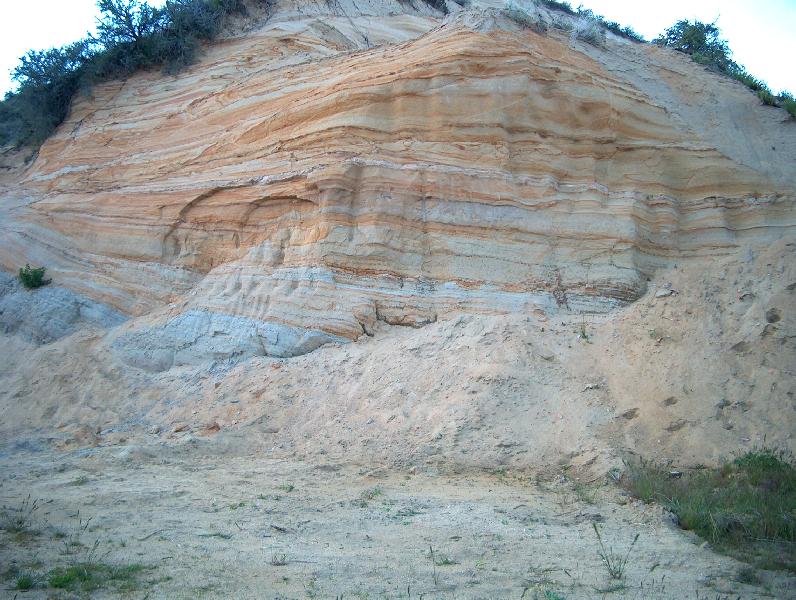
Those who have gone down hundreds of feet and hit either nothing, or short-lived water flows, are in Tertiary period basalt. (Quaternary period is later than Tertiary.) Basalt is pretty resistant to erosion, and when it decays, it turns into montmorillionite, a clay that absorbs water readily--and then becomes an effective block to water passing through. The Payette Formation is later, and layered on top of the Tertiary basalt in our area.
The Payette Formation, like most sandstone/siltstone formations, erodes easily. It turns out that my parcel has two massive basalt blocks--which is why I have the wonderful view. In between the two basalt blocks, running north-south, is a Payette Formation layer--and my neighbor to the north has a well that is about 80 feet north of the property line, along that layer.
On the north and south sides of my lot, where the hill slopes, appears to be Payette Formation.
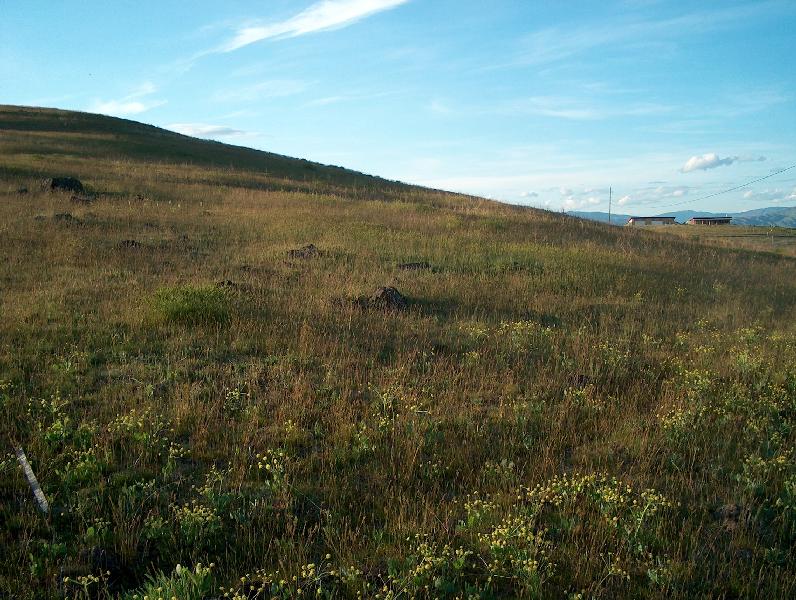
On the south side the county inspector dug a couple of exploratory pits for septic tank evaluation (what is commonly called a "perc test"). When I look carefully at the lower pit, which is within four feet elevation of the road cut mentioned above, I see what seems to be identical sandstone layers. The perc test calls this "shale," but shale is metamorphosed sandstone. This stuff is so crumbly that it barely qualifies as rock, much less metamorphosed sandstone.
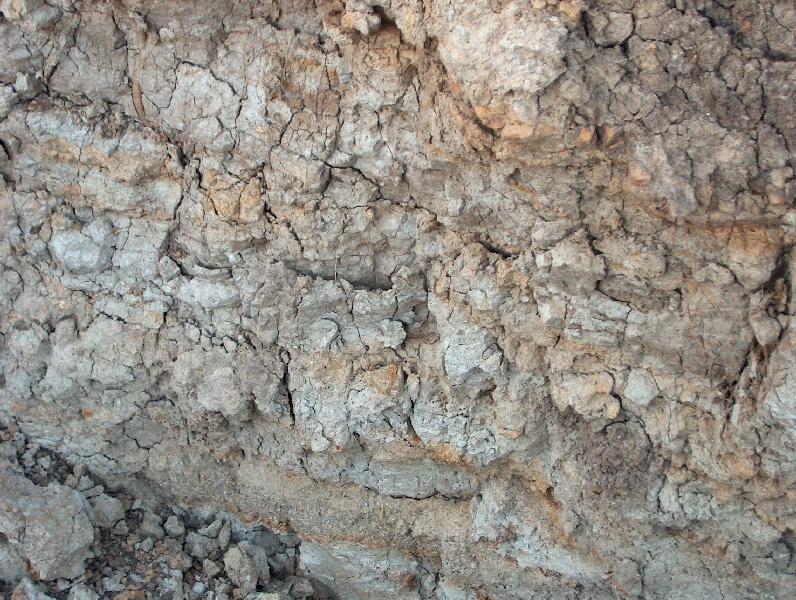
This gives me some confidence that a well here would hit water at about 160 feet, perhaps less.
The other pit, higher up the hillside, seems to be montmorillionite clay--a basalt decay production. This is consistent with the basalt block that shows up on the 1962 map.
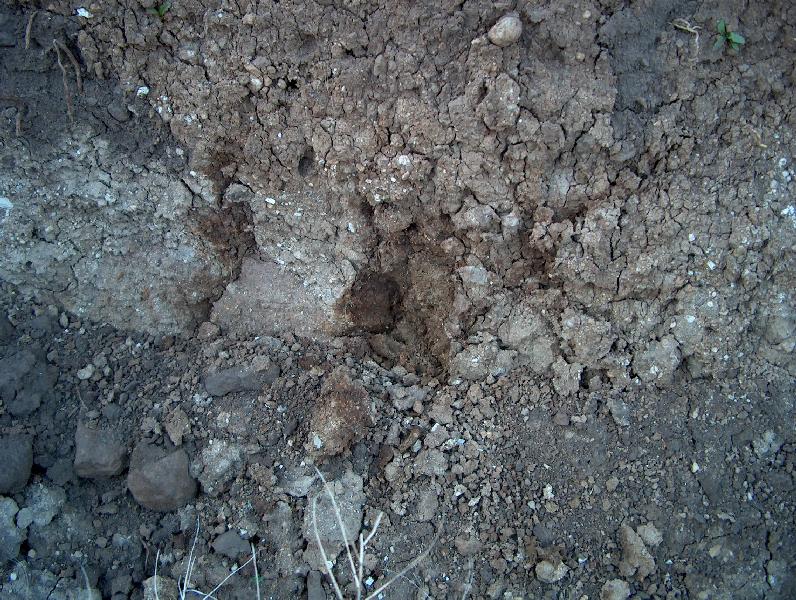
Fortunately, I have been able to test out my theories of where to find water in the subdivision with someone else's money. A house that we looked at--and decided against--was eventually bought. The new owner believed that he had a working well. When they turned on the pump--nothing came out. The well had gone dry.
A friend from church, Jim, is a well driller, and had been hired to dig a new well. I found out about this, and explained to him and the new owner that the house was in the middle of the basalt block that forms the lower half of my lot--and why he was unlikely to get water in the place where the old well had been, or where Jim was drilling the new well. A little investigation found yet a third well hole on the site, also dry, and for the same apparent reason--this basalt was an effective barrier to water flow coming down the mountain.
Anyway, I made a couple of suggestions on places where they were more likely to find water. One was too steep for Jim's well drilling rig (but it had a spring, so there was water there), but the other was feasible. Sure enough, at about 160 feet down (or about 3680 feet elevation), they hit a very solid flow of good water.
I am looking at the question of a driveway. The original estimate from the modular home contractor was for a $23,600 driveway, based partly on my original plan to be at the very top of the lot (higher than I need for the view, and too close to the property line, I think), and I suspect some goldplating--the ultimate driveway.
However, the other contractor, for a site-built home, used to own this lot, and points out that an existing path up the basalt spine is quite stable, and in many places, you can see that basalt. It might need to be smoothed a bit, but it doesn't look like it needs layers of rock and gravel to be an adequate all weather road.
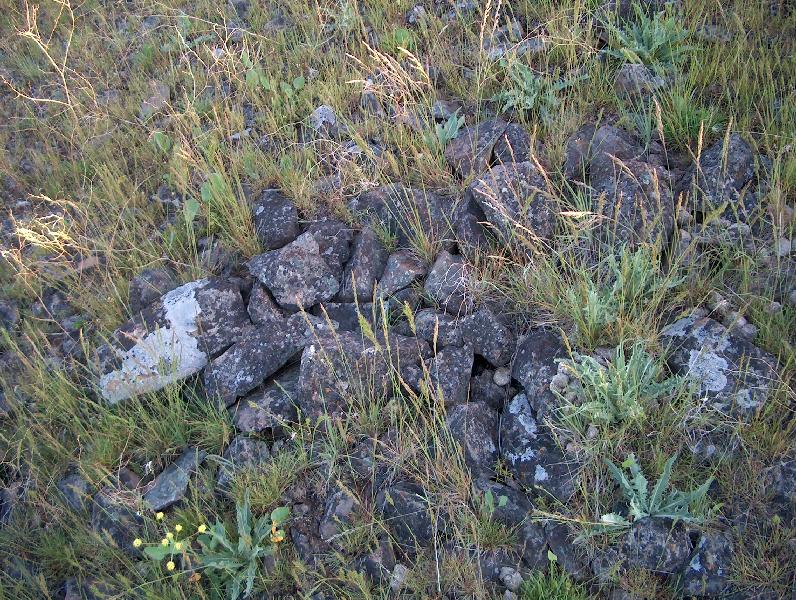
If we go with a site-built home, it will be three stories, each recessed back to fit the shape of the hill. The bottom story is the garage, with stairs into the first floor, and then stairs up to the second floor. The road will also go up the side of the hill so that we can move furniture in through doors on the first and second floors. (We'll have a deck all the way around both floors.)
Some of the local flora:
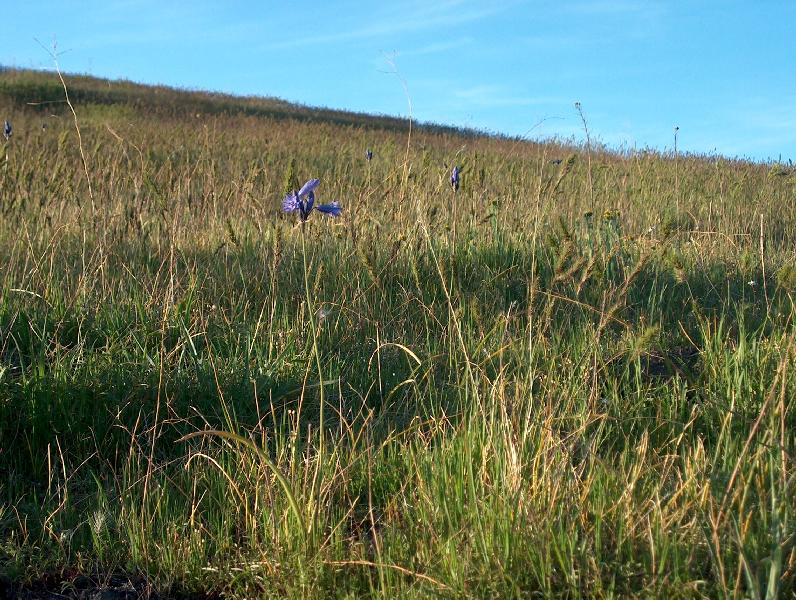
View down the hill. The red car is my Corvette.
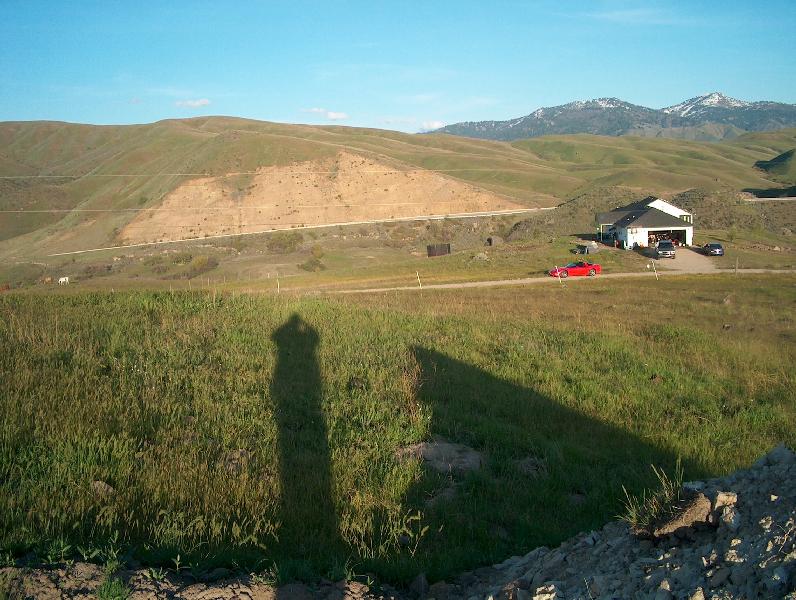
View to the north, of the Payette River Valley, and the town of Horseshoe Bend, from about where the living room will be:
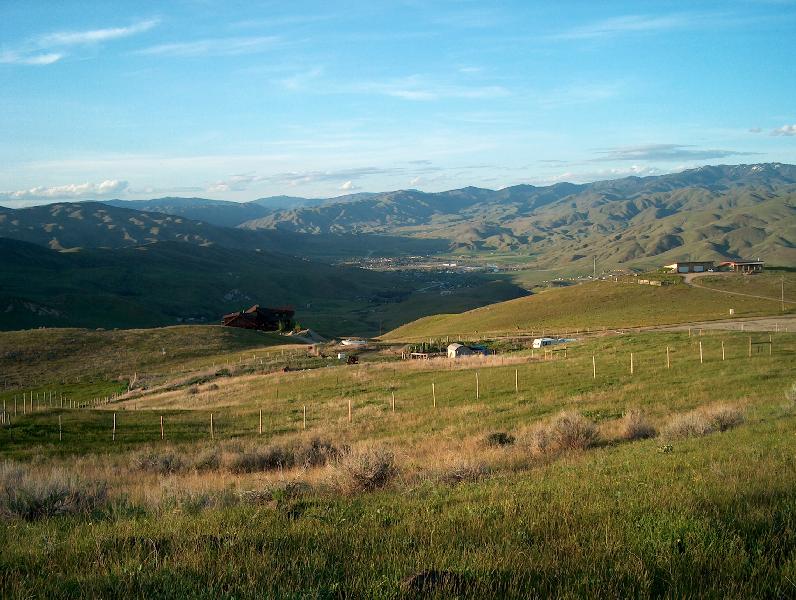
No comments:
Post a Comment